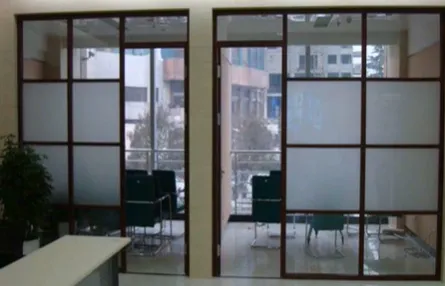Nov . 09, 2024 01:05 Back to list
Understanding the Benefits and Applications of Glass Tempered Technology in Modern Design
The Evolution and Benefits of Tempered Glass
In the realm of modern architecture and design, glass has become an indispensable material. Among its various forms, tempered glass stands out as one of the most resilient and versatile options available today. This type of glass, often referred to as safety glass, has undergone extensive processing to enhance its strength and thermal resistance, making it a popular choice for numerous applications.
Understanding Tempered Glass
Tempered glass is produced through a process called tempering, which involves heating the glass to a temperature of about 620°C (1160°F) and then cooling it rapidly. This method introduces compressive stresses on the surface of the glass while creating tensile stresses within the core. As a result, tempered glass is significantly stronger than standard glass, capable of withstanding impacts and high thermal variations.
A key characteristic of tempered glass is its ability to break safely. Unlike regular glass, which shatters into sharp shards that can cause serious injuries, tempered glass breaks into small, blunt pieces. This innovative safety feature is particularly important in environments where public safety is a concern, such as in buildings, vehicles, and public transit systems.
Applications of Tempered Glass
Tempered glass is utilized in a wide range of applications, from residential and commercial buildings to automotive design. In architectural settings, it is commonly employed in windows, doors, and facades to enhance both aesthetics and safety. Its high resistance to temperature fluctuations makes it suitable for areas exposed to outdoor weather, such as sunrooms or skylights.
In the automotive industry, tempered glass is used for side windows and back windows due to its ability to endure external pressures and impacts during accidents. The use of tempered glass in cars not only protects passengers but also improves the vehicle's overall structural integrity.
glass tempered glass

Moreover, tempered glass is increasingly favored in the design of shower enclosures, glass railings, and countertops. Its sleek appearance, combined with its safety features, makes it an attractive option for modern interior design.
Benefits of Using Tempered Glass
The benefits of tempered glass extend beyond its safety features. One of the most notable advantages is its strength. Tempered glass is typically five to seven times stronger than regular glass of the same thickness, allowing for thinner and lighter designs without compromising safety.
Additionally, tempered glass provides excellent thermal performance. Its resistance to sudden temperature changes makes it ideal for applications where regular glass would be prone to breakage due to thermal stress. This characteristic is invaluable in environments where heating and cooling systems create significant temperature fluctuations.
Energy efficiency is another major benefit of tempered glass. When combined with low-emissivity (Low-E) coatings, tempered glass can contribute to a building's thermal insulation, resulting in lower energy consumption and costs. This energy efficiency aligns with the increasing demand for sustainable building practices and environmentally friendly materials.
The Future of Tempered Glass
As technology continues to evolve, so too does the potential for tempered glass. Innovations in manufacturing processes are leading to even stronger and more energy-efficient products. Additionally, with the rise of smart technology, the integration of tempered glass with interactive displays and smart window technology is on the horizon, enhancing the functionality of this already versatile material.
In conclusion, tempered glass has established itself as a vital component in contemporary design and construction. Its unique combination of strength, safety, and aesthetic appeal makes it a preferred choice across various industries. As we move forward, the ongoing advancements in tempered glass technology will undoubtedly expand its applications, paving the way for safer, more energy-efficient structures and designs. Whether in the context of architecture or automotive engineering, tempered glass undeniably represents a significant leap forward in material science and design, ensuring a brighter and safer future.
-
Safety and Style with Premium Laminated Glass Solutions
NewsJun.24,2025
-
Reinvents Security with Premium Wired Glass
NewsJun.24,2025
-
Premium Float Glass Line for Modern Architecture
NewsJun.24,2025
-
Low Emissivity Glass for Energy-Efficient Architecture
NewsJun.24,2025
-
High-Performance Insulated Glass Solutions for Modern Architecture
NewsJun.24,2025
-
Elevates Interior Style with Premium Silver Mirror
NewsJun.24,2025
Related PRODUCTS














